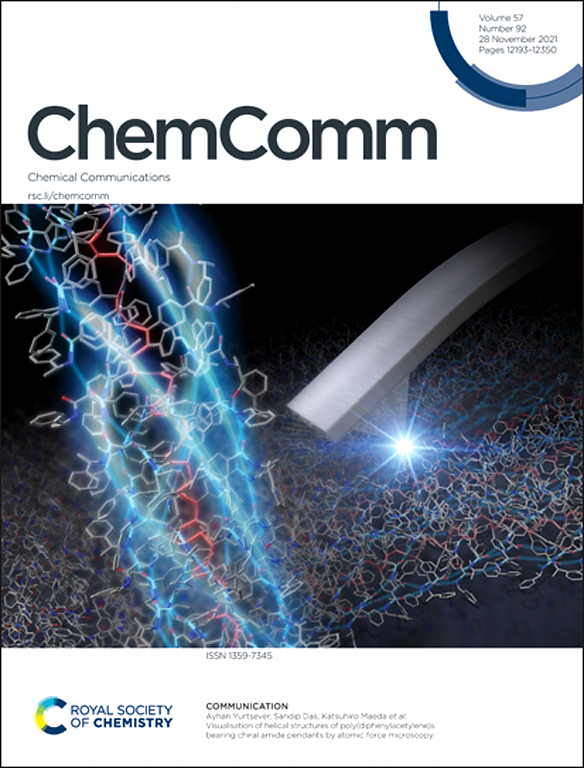使用Pt/SiO2催化剂和低压氢气,通过氢化NAD+类似物进行高选择性1,4- nadh再生。
IF 4.2
2区 化学
Q2 CHEMISTRY, MULTIDISCIPLINARY
引用次数: 0
摘要
使用Pt/SiO2催化剂对烟酰胺类似物进行加氢,然后将氢化物转移到NAD+,导致1,4- nadh的高选择性再生。n -甲基烟酰胺表现出最高的反应活性,在20℃、1atm H2条件下可达到98%的选择性。该策略为1,4- nadh再生提供了一种实用和可持续的途径。本文章由计算机程序翻译,如有差异,请以英文原文为准。
Highly selective 1,4-NADH regeneration via hydrogenated NAD+ analogs using a Pt/SiO2 catalyst with low pressure hydrogen gas.
The hydrogenation of nicotinamide analogs using a Pt/SiO2 catalyst, followed by hydride transfer to NAD+, results in the highly selective regeneration of 1,4-NADH. N-Methyl nicotinamide exhibits the highest reactivity, achieving 98% selectivity at 20 °C under 1 atm H2. This strategy provides a practical and sustainable pathway for 1,4-NADH regeneration.
求助全文
通过发布文献求助,成功后即可免费获取论文全文。
去求助
来源期刊

Chemical Communications
化学-化学综合
CiteScore
8.60
自引率
4.10%
发文量
2705
审稿时长
1.4 months
期刊介绍:
ChemComm (Chemical Communications) is renowned as the fastest publisher of articles providing information on new avenues of research, drawn from all the world''s major areas of chemical research.
 求助内容:
求助内容: 应助结果提醒方式:
应助结果提醒方式:


